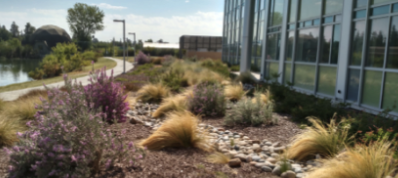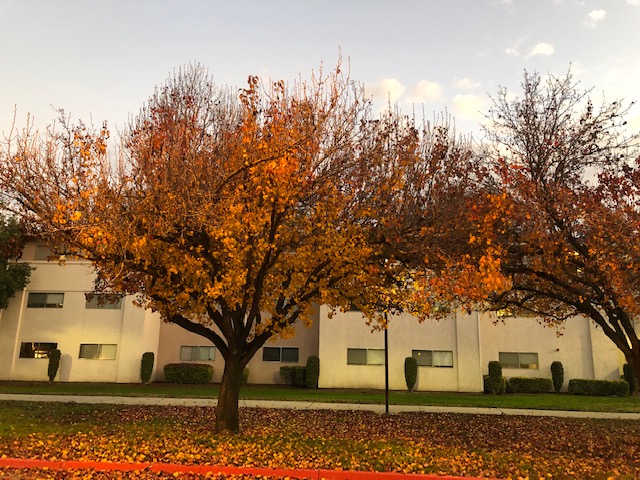Stan State manages 110.38 of the total 210.38 acres of the university's landscape organically, without the use of inorganic fertilizers and chemical pesticides, fungicides, and herbicides. Mowers are equipped with mulching decks, so that all grass clippings are left on the lawn to decompose in a process commonly known as grasscycling, which eliminates the need to use inorganic fertilizers, because grass clippings contain valuable nutrients and moisture. A wood chipper is used to break down pruning materials for use as mulch in the landscape.

The remaining 100 acres are managed in accordance with an Integrated Pest Management (IPM) program that includes:
Cultural practices: Adjusting irrigation to minimize, weed growth and installing drip irrigation on planters instead of conventional irrigation systems.
Biological controls: Allowing natural enemies to control pest populations and electing plants suitable to the climate that are also pest resistant.
Mechanical and physical methods: Pulling and hoeing weeds instead of using chemicals, traps for rodent control and mulching beds to retain moisture and weed suppression
Chemical Control: Chemical pesticides, fungicide, and herbicides are utilized only when cultural, biological, and mechanical methods have been exhausted.
New landscape designs and installations emphasize the use of native plants whenever possible, but most importantly, the use of plants that are drought tolerant, pest resistant and suitable to the Central Valley climate. Existing vegetation is protected, in particular, the university's urban forest of 3,500 trees.
Go to the Interactive Campus Tree Map and click on a tree and its photo to learn about its characteristics, conditions and constraints, pest and disease information, and health, safety, and environmental concerns.

The university's managed grounds are irrigated entirely with reclaimed water using a system that is composed of smart controllers and a weather station to increase efficiency. Drip irrigation is installed on new landscape projects to ensure that the root system is exposed to a direct supply of water and to prevent water from being wasted. Mulch is also utilized heavily in the landscape to help retain moisture on the ground and to minimize the amount of water that needs to be provided to a plant.
Landscape design and installation is conducted for energy efficiency as well as water conservation. For example, trees located inside parking lots are deciduous by design, so that cars can be parked under a shady canopy during the summer months and to allow the sun to warm up the parking lots during the fall and winter when the trees have defoliated. Most paved areas on campus are surrounded by lawn or trees to helps bring the temperature down during the hottest months by at least 15 degrees F.
Updated: July 19, 2022